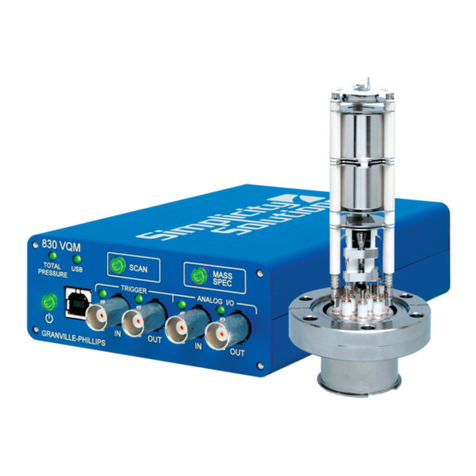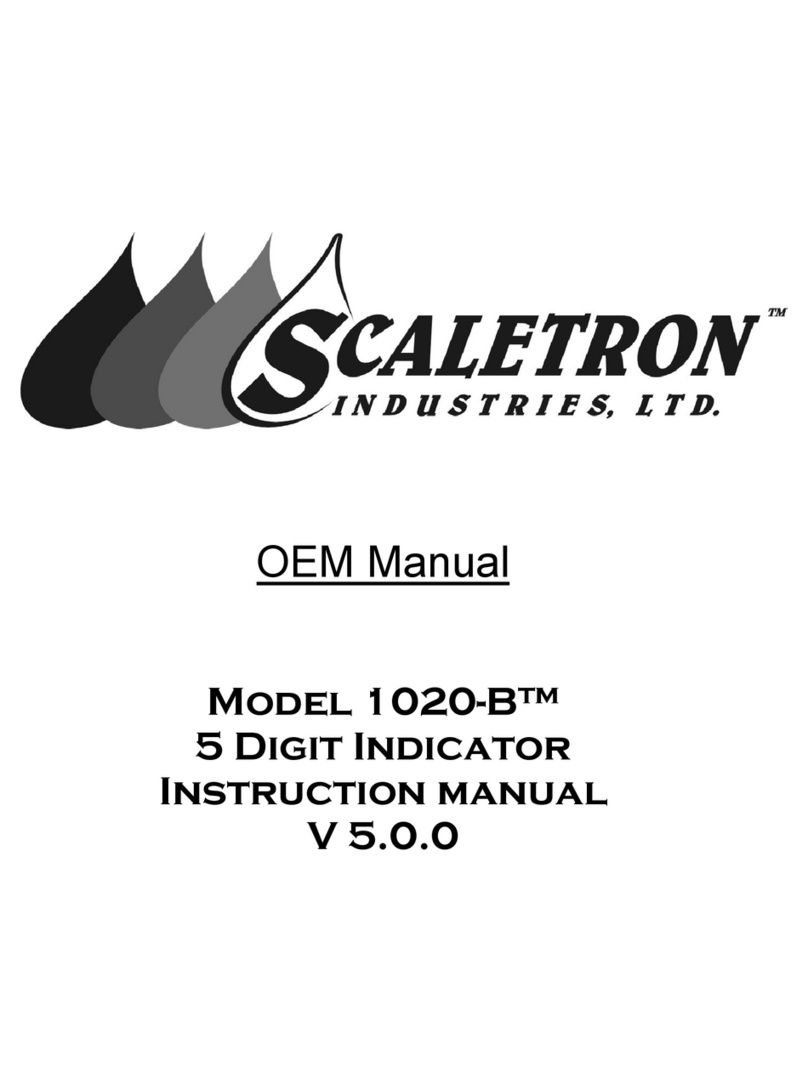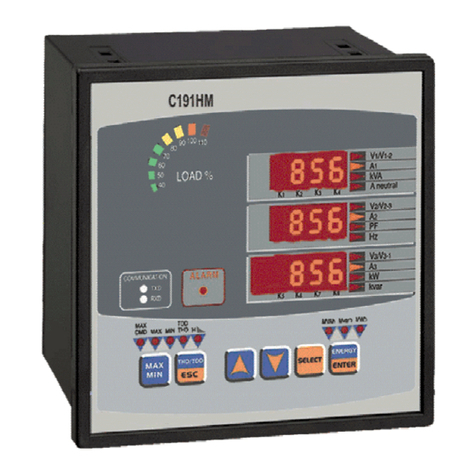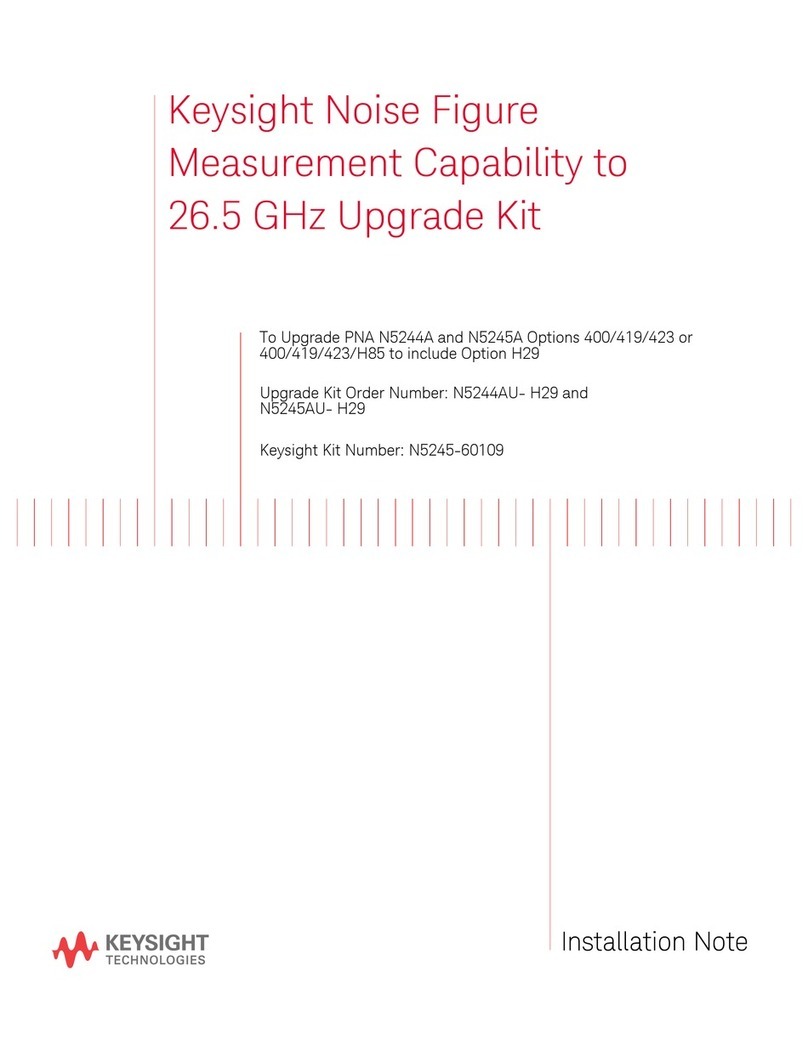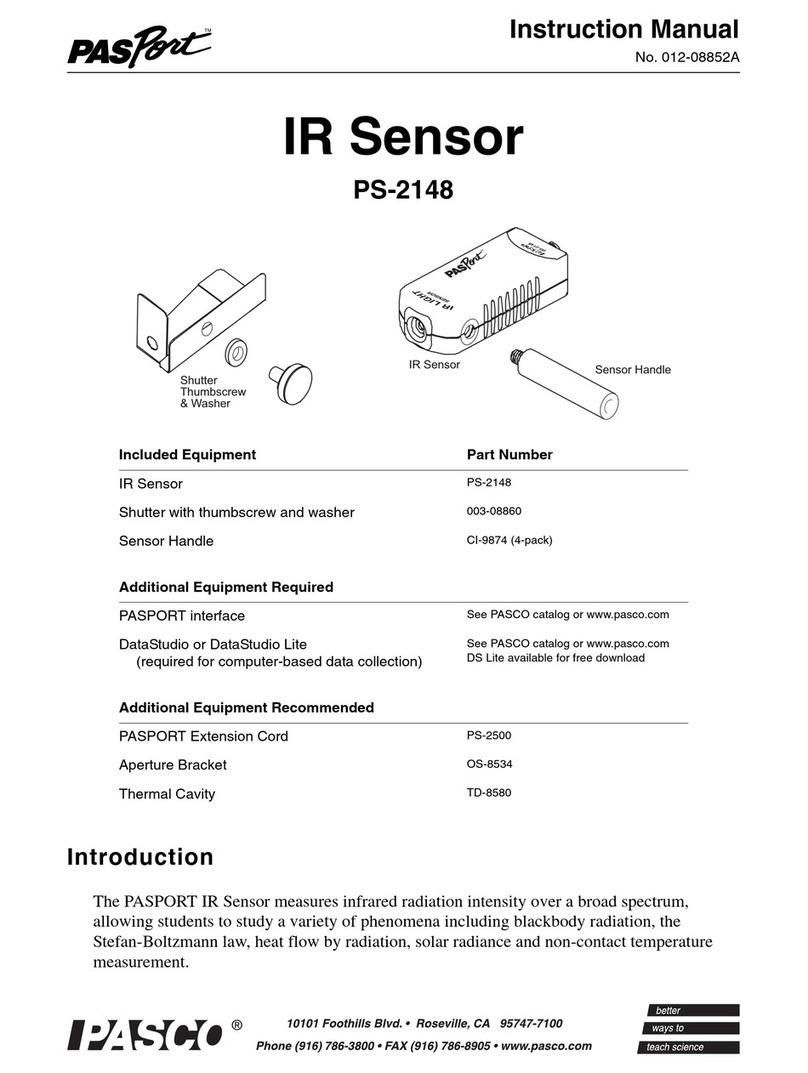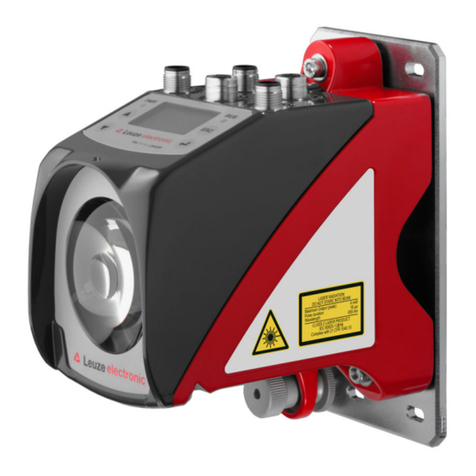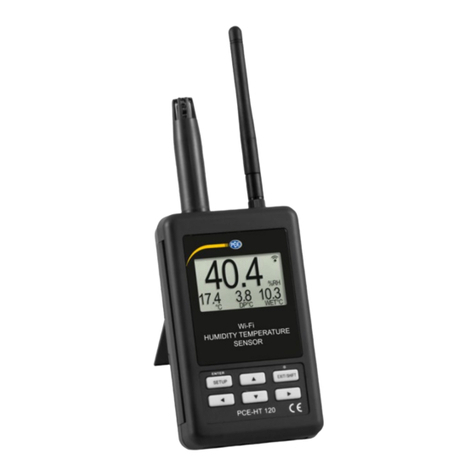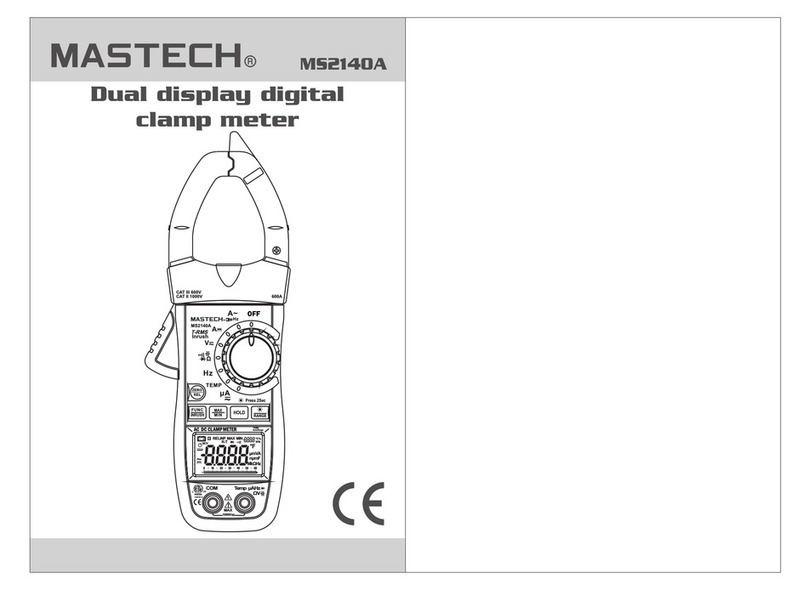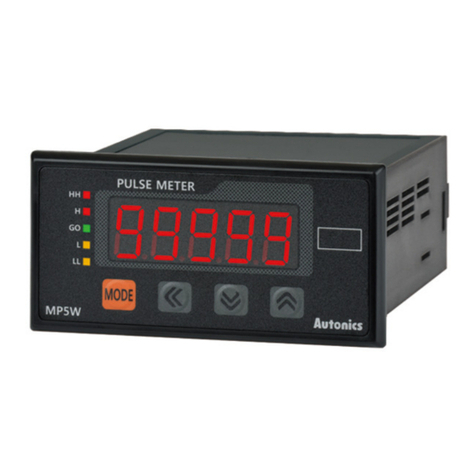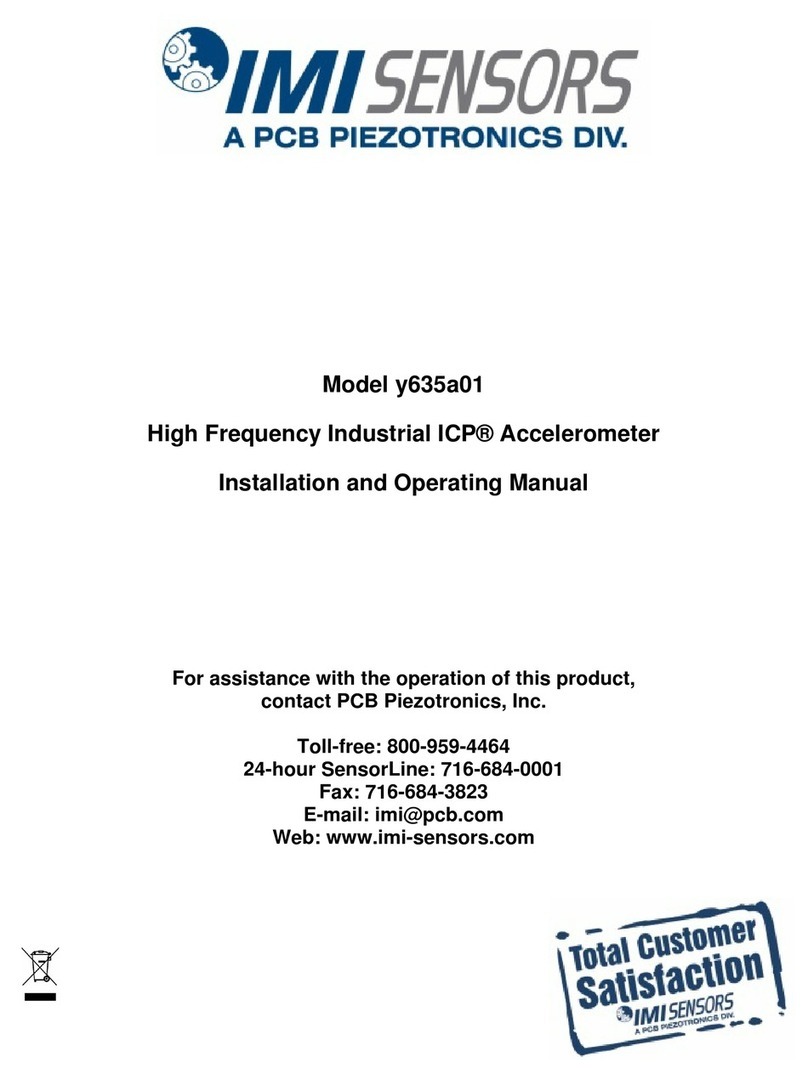Granville-Phillips Mini-Convectron 275 Series Manual

®
GRANVILLE-PHILLIPS
Series 275
Mini-Convectron®Vacuum
Gauge Module with
DeviceNet®Digital Interface
Installation, Operation and Service Instructions


®
GRANVILLE-PHILLIPS
To order products online, visit www.brooks.com
For customer service, 24 hours per day, 7 days per week,
every day of the year including holidays, toll-free within the U.S.A.,
phone 1–800–367–4887
For customer service within the U.S.A., 8 AM to 5 PM, weekdays
excluding holidays:
■Toll-free, phone: 1–800–776–6543
■Phone: 1–303–652–4400
■FAX: 1–303–652–2844
■Email: [email protected]
© 2003, 2006, Brooks Automation. All rights reserved. Granville-Phillips, Micro Ion, Conductron,
Convectron, and Stabil-Ion are registered trademarks of Brooks Automation. All other trademarks
and registered trademarks are the properties of their respective owners.
Series 275
Mini-Convectron®Vacuum
Gauge Module with
DeviceNet®Digital Interface
Installation, Operation, and Maintenance Instructions
Instruction manual part number 275563, Revision 01, November 2006
This manual is for use only with the following part numbers:
275538 and 275553


Mini-Convectron®Module with DeviceNet®Digital Interface i
Table of Contents
Chapter 1 Before You Begin . . . . . . . . . . . . . . . . . . . . . . . . . . . . . . . . . . . . . . . . . 1
1.1 Receiving Inspection . . . . . . . . . . . . . . . . . . . . . . . . . . . . . . . . 1
1.2 International Shipment . . . . . . . . . . . . . . . . . . . . . . . . . . . . . . 1
1.3 Warranty . . . . . . . . . . . . . . . . . . . . . . . . . . . . . . . . . . . . . . . . 1
1.4 Certification . . . . . . . . . . . . . . . . . . . . . . . . . . . . . . . . . . . . . . 1
1.5 Service Guidelines . . . . . . . . . . . . . . . . . . . . . . . . . . . . . . . . . 2
1.6 FCC Verification . . . . . . . . . . . . . . . . . . . . . . . . . . . . . . . . . . . 2
1.7 UL Listed . . . . . . . . . . . . . . . . . . . . . . . . . . . . . . . . . . . . . . . . 2
Chapter 2 Safety . . . . . . . . . . . . . . . . . . . . . . . . . . . . . . . . . . . . . . . . . . . . . . . . . . 3
Chapter 3 Introduction . . . . . . . . . . . . . . . . . . . . . . . . . . . . . . . . . . . . . . . . . . . . . 5
3.1 General Description . . . . . . . . . . . . . . . . . . . . . . . . . . . . . . . . 5
3.2 Specifications . . . . . . . . . . . . . . . . . . . . . . . . . . . . . . . . . . . . . 6
3.3 Power Supply Requirements . . . . . . . . . . . . . . . . . . . . . . . . . . 8
3.4 Component Description . . . . . . . . . . . . . . . . . . . . . . . . . . . . . 9
3.5 Front Panel . . . . . . . . . . . . . . . . . . . . . . . . . . . . . . . . . . . . . . . 10
Digital Display . . . . . . . . . . . . . . . . . . . . . . . . . . . . . . . . . . . . 10
Relay ON LEDs . . . . . . . . . . . . . . . . . . . . . . . . . . . . . . . . . . . . 10
3.6 Side Panel . . . . . . . . . . . . . . . . . . . . . . . . . . . . . . . . . . . . . . . . 10
Process Control Connector . . . . . . . . . . . . . . . . . . . . . . . . . . . 10
Communications Connector . . . . . . . . . . . . . . . . . . . . . . . . . . 10
3.7 Rear Panel . . . . . . . . . . . . . . . . . . . . . . . . . . . . . . . . . . . . . . . 11
Data Rate Switch . . . . . . . . . . . . . . . . . . . . . . . . . . . . . . . . . . 11
Node/Address MAC ID Switches . . . . . . . . . . . . . . . . . . . . . . . 11
MOD/NET Status LEDs . . . . . . . . . . . . . . . . . . . . . . . . . . . . . . 11
3.8 Mounting Flange . . . . . . . . . . . . . . . . . . . . . . . . . . . . . . . . . . . 12
3.9 Theory of Operation . . . . . . . . . . . . . . . . . . . . . . . . . . . . . . . . 13

ii Mini-Convectron®Module with DeviceNet®Digital Interface
Table of Contents
Chapter 4 Installation, Configuration . . . . . . . . . . . . . . . . . . . . . . . . . . . . . . . . . . . 15
4.1 Introdution . . . . . . . . . . . . . . . . . . . . . . . . . . . . . . . . . . . . . . . 15
4.2 Grounding . . . . . . . . . . . . . . . . . . . . . . . . . . . . . . . . . . . . . . . 15
4.3 Installation Precautions . . . . . . . . . . . . . . . . . . . . . . . . . . . . . . 15
4.4 Installation . . . . . . . . . . . . . . . . . . . . . . . . . . . . . . . . . . . . . . . 18
Compression Mount . . . . . . . . . . . . . . . . . . . . . . . . . . . . . . . . 18
1/8 NPT Mount . . . . . . . . . . . . . . . . . . . . . . . . . . . . . . . . . . . . 18
Other Mounts . . . . . . . . . . . . . . . . . . . . . . . . . . . . . . . . . . . . . 19
Trip Point Cable Installation . . . . . . . . . . . . . . . . . . . . . . . . . . 19
4.5 DeviceNet Digital Interface Installation . . . . . . . . . . . . . . . . . 20
4.6 Configuring Polled I/O Data Format . . . . . . . . . . . . . . . . . . . . 21
4.7 Trip Point Relays . . . . . . . . . . . . . . . . . . . . . . . . . . . . . . . . . . . 21
4.8 Checking Module Status . . . . . . . . . . . . . . . . . . . . . . . . . . . . . 23
4.9 Measuring N2or Air . . . . . . . . . . . . . . . . . . . . . . . . . . . . . . . . 23
Vacuum Adjustment . . . . . . . . . . . . . . . . . . . . . . . . . . . . . . . . 23
Atmospheric Adjustment . . . . . . . . . . . . . . . . . . . . . . . . . . . . . 24
Using Input Polled I/O . . . . . . . . . . . . . . . . . . . . . . . . . . . . . . 24
Use with Gases other than N2or Air . . . . . . . . . . . . . . . . . . . . 26
Indicated versus True Pressure Curves . . . . . . . . . . . . . . . . . . 26
Example 1 – Maximum Safe Indicated Pressure . . . . . 27
Example 2 – Indicated To True Pressure Conversion . 27
Example 3 – True To Indicated Pressure Conversion . 27
Example 4 – True To Indicated Pressure Conversion . 27
4.10 Vacuum Gauge Module Process Chamber Baking . . . . . . . . . 31
Chapter 5 Troubleshooting . . . . . . . . . . . . . . . . . . . . . . . . . . . . . . . . . . . . . . . . . . 33
5.1 Introduction . . . . . . . . . . . . . . . . . . . . . . . . . . . . . . . . . . . . . . 33
5.2 Troubleshooting Procedures . . . . . . . . . . . . . . . . . . . . . . . . . . 33
5.3 Status Information . . . . . . . . . . . . . . . . . . . . . . . . . . . . . . . . . . 34
Chapter 6 Service . . . . . . . . . . . . . . . . . . . . . . . . . . . . . . . . . . . . . . . . . . . . . . . . . 37
6.1 Introduction . . . . . . . . . . . . . . . . . . . . . . . . . . . . . . . . . . . . . . 37
6.2 Mini-Convectron Gauge Tube Cleaning . . . . . . . . . . . . . . . . . 37
6.3 Mini-Convectron Gauge Tube Test and Replacement . . . . . . . 40
Figures
Figure 3-1 Dimensions . . . . . . . . . . . . . . . . . . . . . . . . . . . . . . . . . . . 6
Figure 3-2 275 Mini-Convectron Vacuum Gauge
Module End Plate . . . . . . . . . . . . . . . . . . . . . . . . . . . . . . . 9
Figure 3-3 Process Control Connector Pin Assignments . . . . . . . . . . . 10
Figure 3-4 Communications Connector Pin Assignment . . . . . . . . . . 10
Figure 3-5 Gauge Tube Schematic . . . . . . . . . . . . . . . . . . . . . . . . . . 13
Figure 4-1 275 Mini-Convectron Vacuum Gauge Module
Installation (DeviceNet Digital Interface) . . . . . . . . . . . . . 17
Figure 4-2 Gas Pressures, 1 x 10–4 to 1 Torr . . . . . . . . . . . . . . . . . . . 28
Figure 4-3 Gas Pressures, 1 x 10–2 to 1000 Torr, First Gas Set . . . . . . 29
Figure 4-4 Gas Pressures, 1 x 10–2 to 1000 Torr, Second Gas Set . . . 30
Figure 4-5 Module Removal for Baking the Process Chamber . . . . . . 32
Figure 6-1 Gauge Tube Removal from Module . . . . . . . . . . . . . . . . . 38
Figure 6-2 Adding and Draining Solvent . . . . . . . . . . . . . . . . . . . . . . 39
Figure 6-3 Mini-Convectron Gauge Tube Pin Identification . . . . . . . . 40

Table of Contents
Mini-Convectron®Module with DeviceNet®Digital Interface iii
Tables
Table 3-1 Vacuum Connection Height Dimensions . . . . . . . . . . . . . 6
Table 3-2 Performance Specifications . . . . . . . . . . . . . . . . . . . . . . . 7
Table 3-3 Physical Specifications . . . . . . . . . . . . . . . . . . . . . . . . . . . 7
Table 3-4 Gauge Powered by DeviceNet . . . . . . . . . . . . . . . . . . . . . 8
Table 3-5 DeviceNet/422 Communication Parameters . . . . . . . . . . . 11
Table 3-6 275 Mini-Convectron Vacuum Gauge Module
(MOD) LED States . . . . . . . . . . . . . . . . . . . . . . . . . . . . . . 11
Table 3-7 DeviceNet Network (NET) LED States . . . . . . . . . . . . . . . . 12
Table 4-1 Trip Point Connector Pin Assignments . . . . . . . . . . . . . . . 19
Table 4-2 Network Master Connection . . . . . . . . . . . . . . . . . . . . . . . 20
Table 4-3 Allocation Choice Byte Contents . . . . . . . . . . . . . . . . . . . 20
Table 4-4 Disabling the Expected Packet Rate . . . . . . . . . . . . . . . . . 20
Table 4-5 Configuring Polled I/O Data Format . . . . . . . . . . . . . . . . . 21
Table 4-6 Configuring Trip Point Relays . . . . . . . . . . . . . . . . . . . . . . 22
Table 4-7 Checking 275 Mini-Convectron Vacuum Gauge
Module Status . . . . . . . . . . . . . . . . . . . . . . . . . . . . . . . . . 23
Table 4-8 Zero Vacuum Adjust Example . . . . . . . . . . . . . . . . . . . . . 23
Table 4-9 1x10-2 Vacuum Adjust Example . . . . . . . . . . . . . . . . . . . . 23
Table 4-10 Atmospheric Adjustment Parameters . . . . . . . . . . . . . . . . 24
Table 4-11 760 Torr Example . . . . . . . . . . . . . . . . . . . . . . . . . . . . . . . 24
Table 4-12 Input polled I/O for pressure values . . . . . . . . . . . . . . . . . 24
Table 4-13 UINT Counts versus Pressure . . . . . . . . . . . . . . . . . . . . . . 25
Table 4-14 Indicated Versus True Pressure Information . . . . . . . . . . . 26
Table 5-1 DeviceNet Digital Interface Troubleshooting
Procedures . . . . . . . . . . . . . . . . . . . . . . . . . . . . . . . . . . . . 33
Table 5-2 Analog Sensor Status, Class 31hex
Instance 1, Attribute 7 34
Table 5-3 Analog Sensor Reading Valid, Class 31hex Attribute 5 . . . 34
Table 5-4 Identity Object Status, Class 1, Instance 1, Attribute 5 . . . 35
Table 5-5 I/O Status Byte and Device Supervisor Exception Status,
Class 30hex Instance 1, Attribute 0hex . . . . . . . . . . . . . . . . 35
Table 6-1 Mini-Convectron Gauge Tube Pin Test
Resistance Values . . . . . . . . . . . . . . . . . . . . . . . . . . . . . . . 40

iv Mini-Convectron®Module with DeviceNet®Digital Interface

Mini-Convectron®Module with DeviceNet®Digital Interface 1
Chapter 1 Before You Begin
1.1 Receiving
Inspection
On receipt of the equipment, inspect all material for damage. Confirm that
the shipment includes all items ordered. If items are missing or damaged,
submit a claim as stated below for a domestic or international shipment,
whichever is applicable.
If materials are missing or damaged, the carrier that made the delivery must
be notified within 15 days of delivery, or in accordance with Interstate
Commerce regulations for the filing of a claim. Any damaged material
including all containers and packaging should be held for carrier inspection.
Phone customer service at 1–303–652–4400 or 1–800–776–6543 for
assistance if your shipment is not correct for reasons other than shipping
damage.
1.2 International
Shipment
Inspect all materials received for shipping damage and confirm that the
shipment includes all items ordered. If items are missing or damaged, the
airfreight forwarder or airline making delivery to the customs broker must be
notified within 15 days of delivery.
If an airfreight forwarder handles the shipment and their agent delivers the
shipment to customs, the claim must be filed with the airfreight forwarder.
If an airfreight forwarder delivers the shipment to a specific airline and the
airline delivers the shipment to customs, the claim must be filed with the
airline.
Any damaged material including all containers and packaging should be
held for carrier inspection. Phone customer service at 1–303–652–4400 or
1–800–776–6543 for assistance if your shipment is not correct for reasons
other than shipping damage.
1.3 Warranty GRANVILLE-PHILLIPS CONDITIONS OF SALE ARE INCORPORATED BY
REFERENCE HEREIN.
1.4 Certification Granville-Phillips certifies that this product met its published specifications
at the time of shipment from the factory. Granville-Phillips further certifies
that its calibration measurements are traceable to the National Institute of
Standards and Technology to the extent allowed by the Institute’s calibration
facility.

2Mini-Convectron®Module with DeviceNet®Digital Interface
Chapter 1
1.5 Service Guidelines Some minor problems are readily corrected on site. For customer service,
phone 1–303–652–4400 or 1–800–776–6543 within the U.S.A., or email
co-csr@brooks.com. If the product must be returned for service, request a
Return Authorization (RA) from Granville- Phillips. See the Service Form at
the end of Chapter 6. Do not return products without first obtaining an RA.
Shipping damage on returned products as a result of inadequate packaging
is the Buyer’s responsibility.
When returning equipment to Granville-Phillips, please use the original
packing material whenever possible. Otherwise, contact your shipper or
Granville-Phillips for safe packaging guidelines. Circuit boards and modules
separated from the controller chassis must be handled using proper anti-
static protection methods and must be packaged in anti-static packaging.
Granville-Phillips will supply return packaging materials at no charge upon
request.
1.6 FCC Verification This equipment has been tested and found to comply with the limits for a
Class A digital device, pursuant to Part 15 of the FCC Rules. These limits are
designed to provide reasonable protection against harmful interference
when the equipment is operated in a commercial environment. This
equipment generates, uses, and can radiate radio frequency energy and, if
not installed and used in accordance with this instruction manual, may
cause harmful interference to radio communications. However, there is no
guarantee that interference will not occur in a particular installation.
Operation of this equipment in a residential area is likely to cause harmful
interference in which case the user will be required to correct the
interference at his own expense. If this equipment does cause harmful
interference to radio or television reception, which can be determined by
turning the equipment off and on, the user is encouraged to try to correct the
interference by one or more of the following measures:
• Reorient or relocate the receiving antenna.
• Increase the separation between the equipment and the receiver.
• Connect the equipment into an outlet on a circuit different from that to
which the receiver is connected.
• Consult the dealer or an experienced radio or television technician for
help.
1.7 UL Listed This product, when labeled, is listed to UL 3101 Standard for Safety,
Laboratory Equipment by Underwriters Laboratories Inc. (UL).

Mini-Convectron®Module with DeviceNet®Digital Interface 3
Chapter 2 Safety
WARNING
Read this instruction manual before installation, using, or servicing this
equipment. If you have any doubts about how to use this equipment safely,
phone customer service at 1–303–652–4400 or 1–800–776–6543.
These symbols are associated with the handling of poisons and acids.
Follow all local and state codes when working with caustic materials and
liquids.
This symbol is associated with high voltage hazards. Follow all local and
state codes when working with high voltage equipment.
This symbol is associated with handling of combustible materials. Follow
all local and state codes when working with flammable materials and
liquids.
These symbols are associated with situations that may cause equipment to
burst violently due to excessive pressures. Make sure systems are
depressurized before attempting to work on them.
WARNING
Do not use the gauge tube to measure the pressure of combustible gas
mixtures. The sensing element normally operates at only 125° C but it is
possible that momentary transients or controller malfunction can raise the
sensor above the ignition temperature of combustible mixtures which may
explode causing injury to personnel or equipment damage.
WARNING
Danger of injury to personnel and damage to equipment exists on all
vacuum systems that incorporate gas sources or involve processes capable
of pressurizing the system above the limits it can safely withstand.
For example, danger of explosion in a vacuum system exists during
backfilling from pressurized gas cylinders because many vacuum devices
such as ionization gauge tubes, glass windows, glass bell jars, etc., are not
designed to be pressurized.

4Mini-Convectron®Module with DeviceNet®Digital Interface
Chapter 2
WARNING
Install suitable devices that will limit the pressure from external gas
sources to the level that the vacuum system can safely withstand. In
addition, install suitable pressure relief valves or rupture discs that will
release pressure at a level considerably below that pressure which the
system can safely withstand.
Suppliers of pressure relief valves and pressure relief discs are listed in
Thomas Register under “Valves, Relief” and “Discs, Rupture.”
Confirm that these safety devices are properly installed before installing
the Convectron Gauge. In addition, check that
1. The proper gas cylinders are installed,
2. Gas cylinder valve positions are correct on manual systems, and
3. The automation is correct on automated systems.
WARNING
All conductors in, on or around a vacuum system that are exposed to
potential high voltage electrical discharges must either be shielded to
prevent human contact, or be connected to earth ground for safe operation.
When high voltage is present in any vacuum system, a life threatening
electrical shock hazard may exist unless all exposed conductors are
maintained at earth ground. The power cord of this product should be
connected only to a properly grounded outlet. However, grounding this
product does not guarantee that other components of the vacuum system
are maintained at earth ground.
Be aware that an electrical discharge through a gas may couple dangerous
high voltage directly to an ungrounded conductor almost as effectively as
would a copper wire connection. A person may be seriously injured or
even killed by merely touching an exposed ungrounded conductor at high
potential. This hazard is not peculiar to this product.
WARNING
Grounding, though simple, is very important! Please be certain that the
ground circuits are correctly utilized, both on your ion gauge power
supplies and on your vacuum chambers, regardless of their manufacturer,
for this phenomenon is not peculiar to Granville-Phillips equipment. Refer
to Safety Instructions and Chapter 4, for additional information. If you
have questions, or wish additional labels or literature, please contact one
of our service personnel.

Mini-Convectron®Module with DeviceNet®Digital Interface 5
Chapter 3 Introduction
3.1 General Description The Model 275 Mini-Convectron Vacuum Gauge Module, shown in
Figure 3-1, is a modular instrument that is capable of measuring vacuum
pressures from less than 1 x 10-3 Torr to 1000 Torr N2equivalent (or air). The
275 Mini-Convectron Vacuum Gauge Module does not have external
controls or adjustments and is available in RS-485 and DeviceNet digital
interface and analog versions.
The DeviceNet digital interface version provides communication over
networks. The DeviceNet digital interface can be used to read pressure,
calibrate the gauge and configure the trip point relays.
The trip point relays can be used to control various devices such as; safety
interlock, valve, digital input for a scanner, or programmable logic
controller. The relay trip points can be set to customized pressure settings to
turn power ON or OFF to the appropriate device.
The Model 275 Mini-Convectron Vacuum Gauge Module is a rugged device
that is capable of many years of trouble-free service. However, there are
conditions that may cause the gauge tube to fail and should be avoided:
•Chemical Etching - exposure to fluorine, chlorine or mercury causes the
sensor wire to become chemically etched and damaged.
•Too Much Power - if the gauge electronics and gauge tube are connected
while the gauge electronics are powered ON and the gauge tube is at
vacuum, a spike in the bridge voltage can occur at initial contact and
damage the sensor wire. Always turn power OFF or unplug the gauge tube
before connecting the gauge to the module electronics.
•Shock - extreme shock, such as dropping a gauge, can cause a weld to fail.

6Mini-Convectron®Module with DeviceNet®Digital Interface
Chapter 3
3.2 Specifications
Figure 3-1 Dimensions
2
CALIBRATED FOR N
S.P.1
RELAY ON
S.P.2
mTORR
TORR
4.3 in
(109.2 mm)
2.5 in
(63.5 mm)
Refer to
1.6 in
(40.64 mm)
Table 1-1
2.2 in
(55.88 mm)
PROCESS CONTROL
CONNECTOR
COMMUNICATIONS
CONNECTOR
0.07 in
(17.78 mm)
Table 3-1 Vacuum Connection Height Dimensions
Vacuum Connections
Height Dimensions
inches (mm)
1/8 NPT Pipe Thread 1/2 inch Tabulation 0.9 (22.86)
1/4 inch 4VCR-Type Female 1.2 (30.48)
1/2 inch 8VCR-Type Female 1.5 (38.1)
1.33 inch (NW16CF) Conflat-Type 1.5 (38.1)
2.75 inch (NW35CF) Conflat-Type 1.5 (38.1)
NW16KF 1.2 (30.48)
NW25KF 1.2 (30.48)
NW40KF 1.5 (38.1)

Introduction
Mini-Convectron®Module with DeviceNet®Digital Interface 7
Refer to Table 3-2 and Table 3-3 for performance and physical specifications
of the 275 Mini-Convectron Vacuum Gauge.
Table 3-2 Performance Specifications
Parameter Specification
Measurement Range 1 x 10-3 to 1000 Torr for N2or air.
Operating Voltage and
Power
+24 VDC, nominal, 0.2 Amperes, 5 Watts maximum.
NOTE: Customer supplied power supply as shown in
Table 3-4.
Trip Point Relays Single pole-double throw relays (SPDT)
Silver alloy-gold clad contacts
1A, 30 VDC, resistive load or AC non-inductive
Table 3-3 Physical Specifications
Parameter Specification
Vacuum Connections 1/8 NPT Pipe Thread 1/2 inch Tabulation
1/4 inch 4 VCR-Type Female
1/2 inch 8 VCR-Type Female
1.33 inch (NW 16 CF) Conflat-Type
2.75 inch (NW 35 CF) Conflat-Type
NW16KF
NW25KF
NW40KF
Electrical Connection DeviceNet Micro Connector
Weight 13 oz.
Case Material Aluminum extrusion.
Gauge Tube Replacement Field replaceable using only Phillips type
screwdriver.
Operating Temp Range 0oC to 40 oC.
Non-operating Temp Range –40 oC to 70 oC

8Mini-Convectron®Module with DeviceNet®Digital Interface
Chapter 3
3.3 Power Supply
Requirements
The customer supplied power supply should provide operating voltage and
current to the 275 Mini-Convectron Vacuum Gauge Module as specified in
Table 3-4. Surge current is the maximum momentary current when power is
first applied. Operating current is the steady-state current during normal
operation.
Current ratings for DeviceNet power are MAXIMUM. This is not an
ISOLATED NODE.
Table 3-4 Gauge Powered by DeviceNet
Connector Surge Current Operating Current Input Voltage Pin Connection
DeviceNet 1.5 A 8 ms 0.2 A 26 VDC Pin 2, + VDC
Pin 3, -VDC
DeviceNet 2.5 A 8 ms 0.5 A 11 VDC Pin 2, + VDC
Pin 3, -VDC

Introduction
Mini-Convectron®Module with DeviceNet®Digital Interface 9
3.4 Component
Description
The front, rear and side panels of the 275 Mini-Convectron Vacuum Gauge
Module are shown in Figure 3-2 and described in the following paragraphs.
Figure 3-2 275 Mini-Convectron Vacuum Gauge Module End Plate
TO MEET PERFORMANCE SPECIFICATIONS, GAUGE MUST
USED IN ACCORDANCE WITH INSTRUCTIONS FOR USE.
WARNING: POSSIBILITY OF INJURY EXISTS IF NOT
BE INSTALLED WITH THIS AXIS HORIZONTAL.
MOD
STATUS
NET
ADDRESS
LSD
86
4
2
0
PGM
MSD
6
4
0
2
NODE
PGM
DATA RATE
500Kb
250Kb
125Kb
2
CALIBRATED FOR N
S.P.1
RELAY ON
S.P.2
mTORR
TORR
PROCESS CONTROL
CONNECTOR
COMMUNICATIONS
CONNECTOR
FRONT PANEL SIDE PANEL
REAR PANEL

10 Mini-Convectron®Module with DeviceNet®Digital Interface
Chapter 3
3.5 Front Panel
Digital Display The 7-segment digital display on the side of the 275 Mini-Convectron
Module provides a viewable pressure reading. Pressure can be displayed in
Torr or mTorr. The two LEDs next to the display indicate whether the
pressure reading is in Torr or mTorr. The lowest pressure resolution for the
display is 1 mTorr. A reading of -0 indicates a below zero reading which has
the same meaning as bit 3 of the Status Attribute in the S-Analog Sensor
Object.
Relay ON LEDs The Relay ON LEDs are illuminated when either the Trip Point 1 (S.P.1) or
Trip Point 2 (S.P.2)control relays are energized.
3.6 Side Panel
Process Control
Connector
The Process Control Connector provides a connection to the 275 Mini-
Convectron Vacuum Gauge Module trip point relay contacts. Refer to
Figure 3-3 for pin assignments.
Figure 3-3 Process Control Connector Pin Assignments
Communications
Connector
The Communications Connector provides a connection to the 275 Mini-
Convectron Vacuum Gauge Module for 24 VDC Input power and the
DeviceNet network. Refer to Figure 3-4 for pin assignments.
Figure 3-4 Communications Connector Pin Assignment
PIN 2 - TRIP POINT 2 COMMON
PIN 3 - TRIP POINT 2 - N.C.
PIN 4 - DO NOT USE PIN 9 - DO NOT USE
PIN 8 - DO NOT USE
PIN 7 - TRIP POINT 1 - N.O.
PIN 6 - TRIP POINT 1 - N.C.
PIN 5 - TRIP POINT 1 COMMON
PIN 1 - TRIP POINT 2 - N.O.
MALE PINS
N.O. = NORMALLY OPEN N.C. = NORMALLY CLOSED
3 - (-) GROUND
5 - CAN_L
2 - (+) 24 VDC
4 - CAN_H
1 - SHIELD

Introduction
Mini-Convectron®Module with DeviceNet®Digital Interface 11
3.7 Rear Panel
Data Rate Switch The Data Rate Switches select the rate at which data is sent and received on
the DeviceNet network. When the 275 Mini-Convectron Vacuum Gauge
Module power is turned ON or reset by the network, the data rate switch
position will be read by the gauge firmware. Available values are: 125
kbaud, 250 kbaud, 500 kbaud, or PGM. If the gauge power is turned ON
while the Data Rate Switch is in the PGM position, the gauge reads the data
rate from memory.
Node/Address MAC
ID Switches
The Node/Address MAC ID Switches sets the media access control identifier
which the network master uses to address the 275 Mini-Convectron Vacuum
Gauge Module. The addresses range from 0 - 63 (00x - 3Fx). The switch
setting is read when power is applied or when the device is reset.
MOD/NET Status
LEDs
The Status LEDs indicate whether or not the 275 Mini-Convectron Vacuum
Gauge Module or DeviceNet network has power and is functioning
properly. Refer to Table 3-6 and Table 3-7 for more information.
Table 3-5 DeviceNet/422 Communication Parameters
Parameter Default Value Range of Values
Baud Rate 500 kbaud 125, 250, or 500 kbaud
Address 63 0 to 63
Table 3-6 275 Mini-Convectron Vacuum Gauge Module (MOD) LED States
Module State LED State Description
Power OFF OFF No power applied to module.
Self Test Flashing Green-Red Module is in self test.
Operational Green Module is operating normally.
Unrecoverable Fault Red Module has detected an unrecoverable fault.

12 Mini-Convectron®Module with DeviceNet®Digital Interface
Chapter 3
3.8 Mounting Flange The 275 Mini-Convectron Vacuum Gauge Module can be equipped with a
metal seal, O-ring, or VCR type mounting flange as listed in Table 3-1. The
type of flange must be specified when ordering the 275 Mini-Convectron
Vacuum Gauge Module.
Table 3-7 DeviceNet Network (NET) LED States
Network State LED State Description
Not Powered, Not On-
Line
OFF Module is not on-line
• The module has not completed the DUP_MAC_ID test yet.
• The module may not be powered, look at module status LED.
Self Test Flashing
Red/Green
Module is in self-test.
On-line, Not Connected Flashing Green Module has passed the Dup_MAC_ID test, is on-line, but has no
established connections to other nodes. It means that the module has
no established connections.
On-line, Connected Green The module is allocated to a Master. Device is operating normally.
Critical Link Failure Red Failed communication device. The module has detected an error that
has rendered it incapable of communicating on the network
(Duplicate MAC ID or Bus-off).
Connection Time Out Flashing Red The I/O connection is in the timed-out state.
Table of contents
Other Granville-Phillips Measuring Instrument manuals
Popular Measuring Instrument manuals by other brands
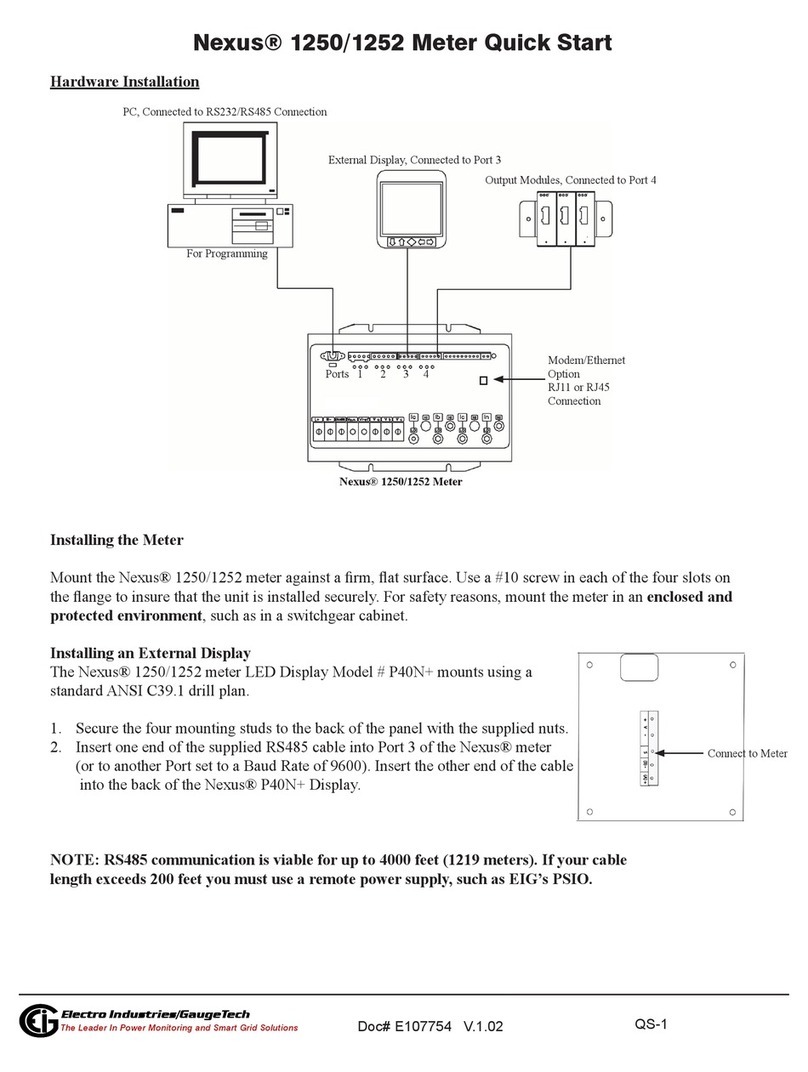
Electro Industries/GaugeTech
Electro Industries/GaugeTech Nexus 1250 quick start
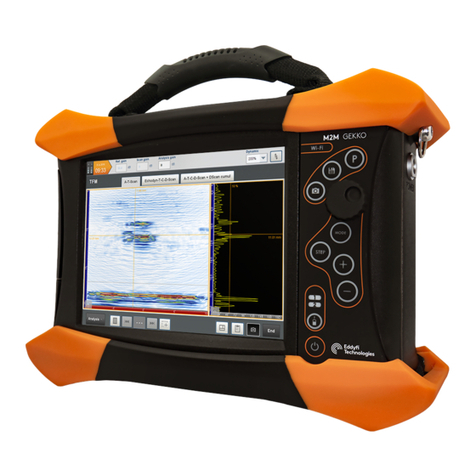
Eddyfi Technologies
Eddyfi Technologies GEKKO M2M Technical documentation
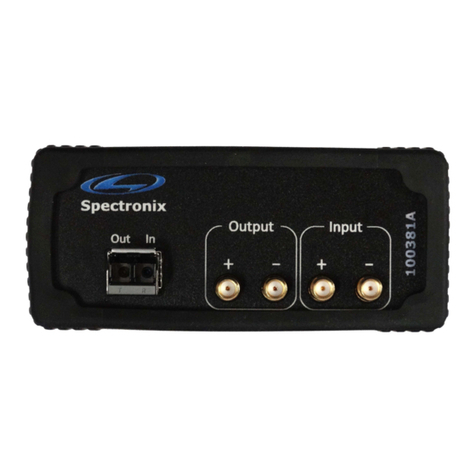
Spectronic
Spectronic Eye-BERT Gen2 user manual
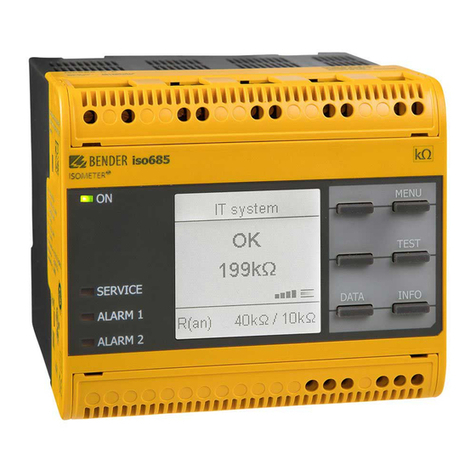
Bender
Bender iso685-S Series Commissioning
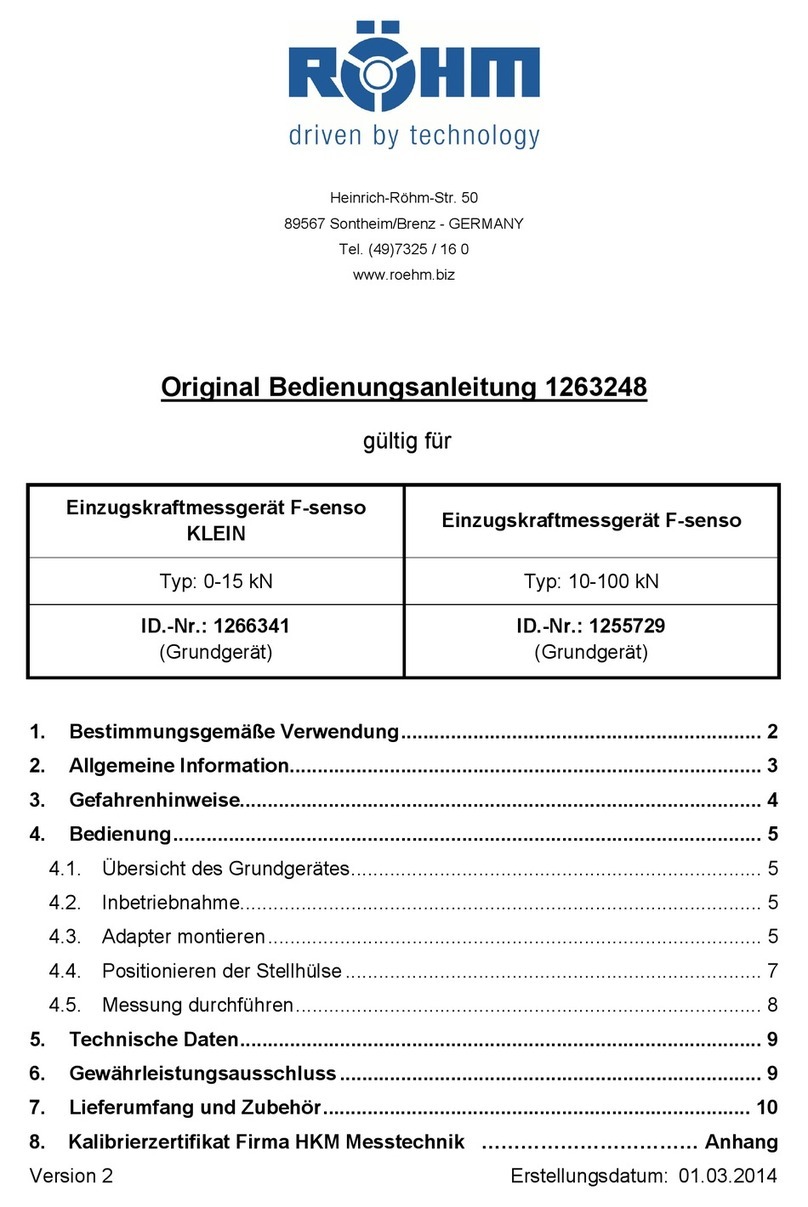
Rohm
Rohm F-senso 1255729 user guide
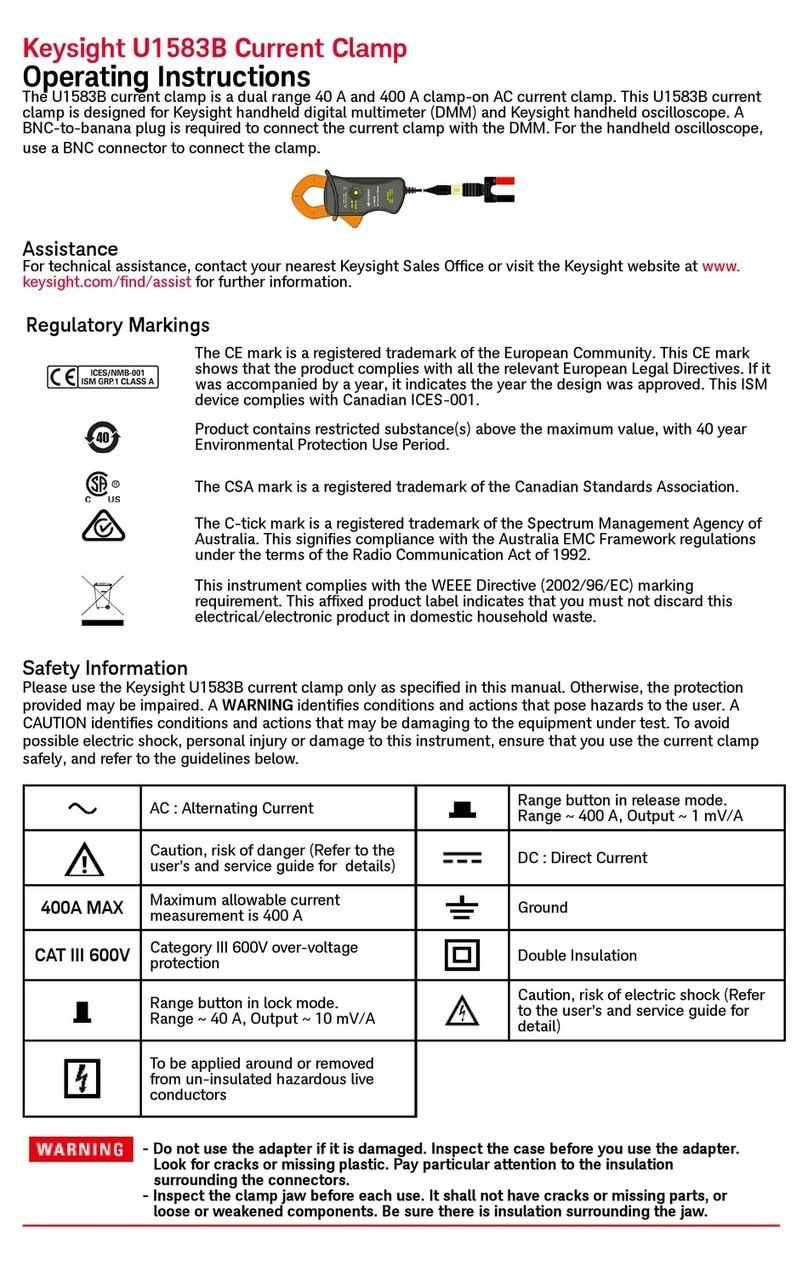
Keysight
Keysight U1583B operating instructions
